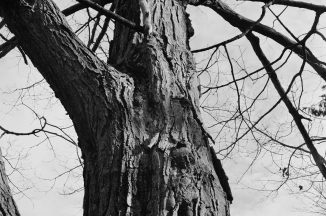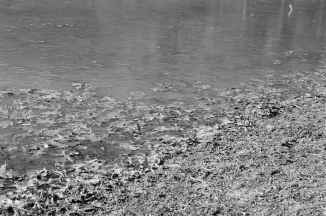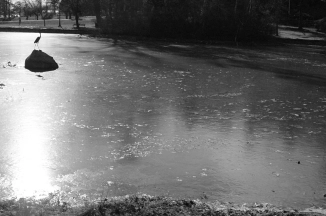Rodinal has always been that “scary” developer to me. How do I use it? How do I dilute it? what does it do to film grain? Why, if it is Rodinal, is it referred to as cryptic brand names like “Adonal”, and “Compard R09 One Shot”? Well, I decided to order a bottle from Freestyle (http://www.freestylephoto.biz/12054-Adox-Adonal-Agfa-Rodinal-Formula-Film-Developer-500ml to find out. After about a week, the bottle arrived. Ironically, the copyright battle in the US involving Adox (the original formula, I believe, was made by Agfa), has seemingly been resolved, and Freestyle now ships the formula in the US as, Rodinal! I have only worked with Kodak D-76 and HC110 developers, so this is a big step.
Anyways, to the chemistry. It is essentially a compound, 4-Aminophenol. It is one of the longest lasting film development formulas still in use today. It is very versatile, and known for super sharp negatives. For stand, or semi-stand development, it is best used for low to medium speed films. Unlike the Kodak developers I mentioned, it is not known as a fine grain developer. What it does provide is high edge sharpness. I decided to use it with the beautiful Ilford Delta 100. I settled on semi-stand methodology. There are, of course, a million ways to do this, and ask a thousand film photographers, you might get 1000 workflows. But here is the approach I went with:
- 1 min presoak in distilled water
- 1:100 Rodinal to H2O (temperature in this methodology does not matter
- 30 secs initial agitation
- 30 minutes stand
- 5 gentle agitations
- 30 minutes stand
- dump
- stop, fix, hypo clear, wash, all followed normally
The results? I love them. Great contrast, more shadow detail, smooth tones, less wonky anomalies, like white blobs of undissolved D-76 powder, or syrupy HC-110. Those are chemicals I will likely still always work with, but, this Rodinal stuff? Well, it’s really special. After years of fighting it, well, this film photographer is drinking the Kool-Aid.
On the way through the park to a Greek Festival, I saw this group practicing in the park. What sport, if any, they were practicing, I do not have a clue. Co-ed football, maybe. Taken with the Hasselblad and 80mm Zeiss-

Not practicing their film developing skills.
A couple things that I noticed right away upon reviewing the dried negatives. The shadow detail is amazing. I am guessing, for example, that the towel in the shadows in the lower left of the frame, might be darker, or completely unseen, if the film had been developed in D-76, maybe not as much so with HC-110. The grain is there, but it is beautiful. Smooth, not blocky. The image is almost too sharp, individual blades of grass clearly defined. The contrast, beautiful, definitive and well-defined. It has its own “look”.
A myth shattered here- Rodinal CAN indeed be used with higher speed film, such as Kodak Tri-X, or Ilford HP5 Plus. Stand or semi stand is not recommended. There are several dilutions available on The Massive Dev Chart, and corresponding temperatures should be observed.

That’s a UHaul truck way in the background- clear, and sharp.
Not only is semi-stand with Rodinal a lot of fun, it can yield some beautiful results. Off to the Greek Festival.













































